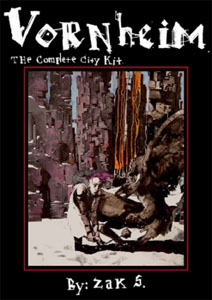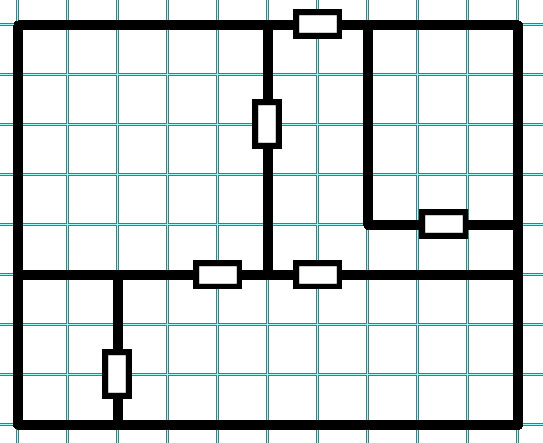 More “Fun With Vornheim“, this time dealing with the aftermath of a magical catastrophe.
More “Fun With Vornheim“, this time dealing with the aftermath of a magical catastrophe.
As a backdrop detail, rumors surge through the city streets about an explosion in the Mages’ Quarter. To determine the aftermath of the explosion, I roll on the “Magic Effects” table on page 60:
“Caster’s body turns to living tarlike substance — cutting, thrusting, and piercing weapons lodge harmlessly in it. Objects must be removed before effect ends or caster dies.”
I’m going to arbitrarily say that happens to (2d100) 38 people, who go rampaging through the streets before getting contained by the town guard.
One of the PCs, however, decides to take a greater interest in the catastrophe. Using the “Contacts” rules from page 39, he knows he has 3 contacts he can tap.
Who are they? We use the City NPCs table on page 50 and we get:
- Brazz the Slow, Hunter: An expert in the geography of the Underforest. He’s suspicious of “top-folk”, but bribe-able.
- Madchen Unwern, Barrister: She will betray anyone who trusts her, then confess and beg for mercy. Enjoys beekeeping and horticulture.
- Deelia Wyrd, Half-Elven Shoemaker: She has an obscure ceremonial obligation to do some strange but subtle ritual at dusk every day. May or may not actually prevent genuine dire mystical consequences. (Let’s say that at dusk each day she must bind the imps to make her shoes. Without that geas placed upon them, the imps would be free to assassinate the Pale Goddess and free the Dark Spirit of the City.)
So the PC starts hitting up his contacts. What do they know? We roll on the “Contacts” table on page 52:
- Brazz: “No, but if you’re interested in that, I have another proposition for you.” (Brazz doesn’t know anything about the explosion in the Mages’ Quarter. But recently he has been encountering animals in the Underforest which have been transformed into similar tar creatures. Most of them seem to be coming out of the Chasm of Blue Fire.)
- Madchen Unwern: Says she doesn’t know and seems afraid to say. (She was approached last week by a wizard who went missing in the explosion. She knows she met with him, but now her files on the case are missing… and so are her memories of the meeting.)
- Deelia Wyrd: “Mmmm… maybe — let me see, can you come back tomorrow?” When the PCs come back, something has happened. (Hmm… I’m not sure. Maybe one of her imps disappeared during the explosion and hasn’t returned? Maybe she can dig up some background details on the wizard who was killed in the explosion? Or she can tap her mystical resources to find a tome describing previous appearances of the tar creatures? Fortunately, I’ve got some time to figure it out.)
That’s what Vornheim: The Complete City Kit has to offer. Pick up a copy and start having fun!
UPDATE: The author of this book has been credibly accused of being a serial abuser and rapist. Although I am leaving this post up, I cannot recommend that anyone purchase this or any of his other works, as he has also demonstrated that he will use income from projects like this to continue harassing his victims.












